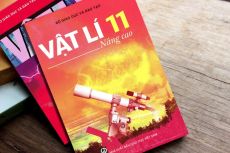Mark the letter A, B, C, or D to indicate the sentence that is closest in meaning to each of the following questions
People say that Vietnamese students are not well-prepared for their future jobs.
Hãy suy nghĩ và trả lời câu hỏi trước khi xem đáp án
Lời giải:
Báo saiKiến thức về câu bị động
Đề bài: Người ta nói rằng học sinh Việt Nam không được chuẩn bị tốt cho công việc tương lai của họ = A. Học sinh Việt Nam được nói là không được chuẩn bị tốt cho công việc tương lai của họ.
Câu hỏi liên quan
-
The Japan of the mid-nineteenth century was a shadow of the modern economic juggernaut that is now one of the world's leading traders. For hundreds of years, Japan had been secluded from the outside world by the strict policies of the rulers of Japan, the Tokugawa shoguns. With the exception of one Dutch ship per year at the port of the Nagasaki, the Japanese refused to deal with foreign ships or nations. Sailors shipwrecked on the Japanese islands were treated harshly and often imprisoned. Passing vessels were refused food, water, and other provisions. With a goal to right these wrongs and to open Japan to trade, in 1853, the United States sent its most capable man, Admiral Matthew Perry, and four warships to open Japan to the rest of the world. The consequences of those actions are still being felt today.
In the seventeenth century, the Japanese had opened their doors briefly to the Dutch and allowed a trading station and Christian enclave in Nagasaki. Guns were imported as part of this trade, and they were one of the reasons for a great upheaval that engulfed Japan for many decades, as a civil war raged between powerful shoguns, or warlords. Finally, Tokugawa emerged as the victor and claimed the lordship of Japan. During these upheavals, the emperor and his family had stood by wielding no power and existed merely as a figurehead. Soon after the civil war, the abandoned the use of guns and the art of the gun making. When Admiral Perry and his fleet arrived in 1853, they were defenseless against his awesome firepower.
Perry had three main purposes when he arrived in Japan: open the country to American trade, get an agreement to use Japan as a coaling and provisioning station for American vessels, and provide guarantees that Japan would aid shipwrecked American sailors. He wished to deal only with the highest officials and rebuffed Japanese attempts to foster lower-level emissaries on him. He sailed away to examine further the coast of Taiwan as a possible coaling station but returned to Japan the following spring in March 1854. This time, under threat of naval bombardment, the Japanese relented and finally signed the Treaty of Kanagawa on March 31, 1854. In addition to the three main items, the Japanese agreed to allow an American consulate to be established. At first, only Nagasaki was open to American trade, but the treaty stipulated that, after five years, other ports would be opened.
The consequences of these events were far reaching for Japan and the world. Within a few years, foreign currency began to flow to Japan, which upset its economy and caused rising inflation. This was a precursor to the fall of the Tokugawa shoguns and the return of the emperor as the leader of Japanese affairs in 1868. The Emperor Meiji then set a clear path for his nation, not wanting Japan to be under the heel of the foreigners who now clamored at the heel of the foreigners of his land. Meiji sent sailors to England to learn how to build ships and fight a modern naval war, invited German army officers to train his soldiers, and made deals with many companies to modernize Japan's industry, transportation, and communications. In fact, the efforts were so successful that, by the 1980s, the world began to view Japan as one of the great powers, more so after it defeated both China and Russia on land and at sea in two local wars. The Russian defeat was even more astonishing since the Europeans were unused to losing to those they considered their inferiors.
Japan's rapid industrialized and militarization had dreadful consequences for Asia, as Meiji's grandson Hirohito led the nation down the path to world war, which ultimately saw the destruction of much of Japan. The shock of this defeat still echoes through Japanese history, as&nbs -
Read the text below and decide which answer (A,B,C, or D) best fits each space.
BICYCLES
Why don’t the British cycles? Only a quarter of the estimated twenty million bicycles in the country are thought to be in (58) …….. use. In Denmark, which is flatter but no darker or rainier than Britain, twenty percent of all journeys are made by bicycles, while in Britain the (59) …….. is only 5%. The government are trying to (60) …….. this. It is hoped that a grant of millions of pounds from the National Lottery will (61)…….. more people to use their bikes. The money will be used to (62) …….. for a 6,500 mile national network of cycle tracks. Britain needs to (63) …….. environmentally friendly scheme such as this. The southern third of the country is one of the most (64)…….. areas of the world. Environmentalists make it (65) …….. to build new roads, and (66) …….. roads are overcrowded. One official committee described the growth of motor transport as “possibly the (67) ……. environmental threat to the UK”. The (68)…….. of building the cycles tracks is to motivate people to use their bicycles instead of their cars. However, the new tracks are being built (69) …….. cities and not through them. This (70) …….. that only long distance journeys may be easier and safer. Those cyclists who want to (71) …….. inside cities will still be in danger of (72) …….. their lives on busy roads every time they use their bicycles.70.................
-
Read the following passage and mark the letter A, B, C, or D on your answer sheet to indicate the correct answer to each of the questions.
Coral reefs are some of the most diverse ecosystems in the world, housing tens of thousands of marine species. With their hardened surfaces, corals are sometimes mistaken as being rocks. And, because they are attached, “taking root” to the seafloor, they are often mistaken for plants. However, unlike rocks, corals are alive. And unlike plants, corals do not make their own food. Corals are in fact animals. Appearing as solitary forms in the fossil record more than 400 million years ago, corals are extremely ancient animals that evolved into modern reef-building forms over the last 25 million years.
Coral reefs are the largest structures on earth of biological origin. Coral reefs are unique and complex systems. Rivaling old growth forests in longevity of their ecological communities, well-developed reefs reflect thousands of years of history.
Corals are ancient animals related to jellyfish and anemones. The branch or mound that we often call “a coral” is actually made up of thousands of tiny animals called polyps. A coral polyp is an invertebrate that can be no bigger than a pinhead to up to 30 centimeters (1 foot) in diameter. The polyps extend their tentacles at night to sting and ingest tiny organisms called plankton and other small creatures. Each polyp has a saclike body and a mouth that is encircled by stinging tentacles. The polyp uses calcium carbonate (limestone) from seawater to build a hard, cup-shaped skeleton. This skeleton protects the soft, delicate body of the polyp.
Reefs only occur in shallow areas that are reachable by sunlight because of the relationship between coral and algae. Various types of microscopic algae, known as Symbiodinium, live inside of the coral, providing them with food and helping them to grow faster.
There are over 2,500 kinds (species) of corals. About 1,000 are the hard corals that build coral reefs. Other corals are soft corals. Soft corals have skeletons that are flexible and can bend with the water. The three main types of coral reefs are fringing reefs, barrier reefs, and coral atolls. The most common type of reef is the fringing reef. This type of reef grows seaward directly from the shore. They form borders along the shoreline and surrounding islands. When a fringing reef continues to grow upward from a volcanic island that has sunk entirely below sea level, an atoll is formed. Atolls are usually circular or oval in shape, with an open lagoon in the center. Any reef that is called a barrier reef gets its name because its presence protects the shallow waters along the shore from the open sea. That protection promotes the survival of many types of sea plant and animal life.The word “rivaling” in paragraph 2 is closest in meaning to _____________.
-
Almost as soon as World War II ended, the debate began over who had actually done the most on the Allied side to ensure the defeat of the Axis powers. The Russians only needed to point to their twenty million plus war dead to justify their rights in Eastern Europe and their new position as a great power on the world stage. Yet, Americans could also claim that they had done as much, if not more, as the Russians to defeat the Axis enemy. In hindsight, it is obvious that despite its greater number of dead, the Russian effort ranks second place to the American. In particular, the American effort seems greater in light of three crucial points: it was fighting at extreme distances from its home territory; it simultaneously fought three different enemies on a multitude of complex fronts with air, naval, land forces; and finally, it supplied many other fighting forces, including the Russians, with massive amounts ofmaterial.
The main fronts of World War II were in North Africa, Italy, Western and Eastern Europe, the Pacific Ocean, China, and India. The United States military forces fought on or supported every front, all of which were at extreme distances from the continental United States. A great logistical effort required to support both its own forces and those of many other nations. Above all, supply ships were essential because without the supply ships, all would have been in vain. Keeping the world's sea lanes free was one of the great accomplishments of the United States Navy and her allies, especially the British and Canadians. This allowed ships to traverse great distances and bring American and other Allied fighting forces to face the Axis powers. The Russians, on the other hand, were fighting in their own country for much of the war and were close to their supply lines. They fought on one continuous font and did not have to travel far to meet the enemy.
The United States fought all three great Axis powers during the war: Germany, Japan, and Italy. While it cannot be denied that the Russian did the lion's share of the fighting against Germany and the lesser Axis powers of Finland, Hungary, Romania, and Bulgaria for a longer time, it was not until the last days of the war that Russia attacked Japan. As for the Italians, the Russians only met the reluctant few whom Hitler managed to coerce for his Russian campaign. Another area to take into consideration is the strategic bombing campaign that the Americans and British waged against German industry, something that the Russians did not take part in at all. Finally, with the exception of the Baltic Sea, the Russian navy played a very minor role in the war compared to American's navy. Despite significant aid from the British, Australians, and New Zealanders, the Americans bore the brute of the Pacific fighting.
The Chinese tied down a massive number of Japanese troops on the Asian mainland, but they were supplied almost exclusively by the United States. American arms, support equipment, food, and clothing went to the four corners of the world during the war even before American officially entered it in 1941. Indeed, the Russian Red Army rode into Eastern Europe on the wheels of over 300,000 American trucks, fed itself on a diet of American canned ham, and wore
American boots. Coupled with all this were billion-dollar loans with generous terms of interest, which America gave to its allies. American was the only Allied nation that did not need to borrow any money during the war.
Russia's combat dead were approximately eight million. American's number of combat deal was nowhere near the equal of the Russia's comprising less than five percent of the number of Russian combat deaths. This is not only a reflection of the intensity of the fighting in Eastern Euro
-
Read the following passage and mark the letter A, B, C, or D on your answer sheet to indicate the correct answer to each of the questions.
Thanksgiving is celebrated in the US on the fourth Thursday in November. For many Americans it is the most important holiday apart from Christmas. Schools, offices and most businesses close for Thanksgiving, and many people make the whole weekend a vacation.
Thanksgiving is associated with the time when Europeans first came to North America. In 1620 the ship the Mayflowers arrived, bringing about 150 people who today are usually called Pilgrims. They arrived at the beginning of a very hard winter and could not find enough to eat, so many of them died. But in the following summer Native Americans showed them what foods were safe to eat, so that they could save food for the next winter. They held a big celebration to thank God and the Native Americans for the fact that they had survived.
Today people celebrate Thanksgiving to remember these early days. The most important part of the celebration is a traditional dinner with foods that come from North America. The meal includes turkey, sweet potatoes (also called yams) and cranberries, which are made into a kind of sauce or jelly. The turkey is filled with stuffing or dressing, and many families have their own special recipe. Dessert is pumpkin made into a pie.
On Thanksgiving there are special television programs and sports events. In New York there is the Macy's Thanksgiving Day Parade, when a long line of people wearing fancy costumes march through the streets with large balloons in the shape of imaginary characters. Thanksgiving is considered the beginning of the Christmas period, and the next day many people go out to shop for Christmas presents.
According to the passage, Pilgrims are ______.
-
Read the following passage and mark the letter A, B, C, or D on your answer sheet to indicate the correct answer to each of the questions.
Mandatory volunteering made many members of Maryland's high school class of 97 grumble with indignation. They didn't like a new requirement that made them take part in the school's community service program. Future seniors, however, probably won't be as resistant now that the program has broken in. Some, like John Maloney, already have completed their required hours of approved community service. The Bowie High School sophomore earned his hours in eighth grade by volunteering two nights a week at the Larkin-Chase Nursing and Restorative Center in Bowie.He played shuffle board, cards, and other games with the senior citizens. He also helped plan parties for them and visited their rooms to keep them company.
John, fifteen, is not finished volunteering. Once a week he videotapes animals at the Prince George's County animal shelter in Forestville. His footage is shown on the Bowie public access television channel in hopes of finding homes for the animals. "Volunteering is better than just sitting around," says John, "and I like animals; I don't want to see them put to sleep." He's not the only volunteer in his family. His sister, Melissa, an eighth grader, has completed her hours also volunteering at Larkin-Chase.
"It is a good idea to have kids go out into the community, but it's frustrating to have to write essays about the works," she said. It makes you feel like you're doing it for the requirement and not for yourself." The high school's service learning office, run by Beth Ansley, provides information on organizations seeking volunteers so that students will have an easier time fulfilling their hours.
"It's ridiculous that people are opposing the requirements," said Amy Rouse, who this summer has worked at the Ronald McDonald House and has helped to rebuild a church in Clinton.
"So many people won't do the service unless it's mandatory," Rouse said, "but once they start doing it, they'll really like it and hopefully it will become a part of their lives - like it has become a part of mine."
From paragraphs 6 and 7, we can infer that Melissa Maloney ______.
-
Read the following passage and mark the letter A, B, C, or D on your answer sheet to indicate the correct word or phrase that best fits each of the numbered blanks.
Amparo Lasén, the Spanish sociologist who conducted the study found that Londoners use their cell phones the least in public. If they are with others, they prefer to let calls be answered by voice mail (a recorded message) and then they check for messages later. If the English do answer a call on the street, they seem to dislike talking with others around. They tend to move away from a crowded sidewalk and seek out a place (23) ________ they cannot be heard, such as the far side of a subway entrance or even the edge of a street. They seem to feel that the danger of the traffic is (24) ___________ to the risk of having their conversation be overheard. This has led to a behavior that Laser has called "clustering." At a busy time of day on the streets of London, you may find small crowds of cell phone users grouped together, each one talking into a cell phone. Even when it is raining—as it is often in London—people still prefer not to hold their conversations where others could hear. They talk (25) _____________ their umbrellas or in a doorway.
In Paris, however, there are stricter rules about how and when to use cell phones. It is not considered polite to use a phone in a restaurant, (26) ______________, though it might be acceptable in the more informal setting of a café. One special custom that has developed in cafés seems unique to Paris. Young women often place their cell phones on the table beside them to signal that they are expecting someone. When the friend arrives, the phone is (27) _____________. In fact, the French are generally very disapproving of phone use in public and are quick to express that disapproval, even to strangers.It is not considered polite to use a phone in a restaurant, (26) ______________, though it might be acceptable in the more informal setting of a café. One special custom that has developed in cafés seems unique to Paris
-
Read the text below and decide which answer (A,B,C, or D) best fits each space.
BICYCLES
Why don’t the British cycles? Only a quarter of the estimated twenty million bicycles in the country are thought to be in (58) …….. use. In Denmark, which is flatter but no darker or rainier than Britain, twenty percent of all journeys are made by bicycles, while in Britain the (59) …….. is only 5%. The government are trying to (60) …….. this. It is hoped that a grant of millions of pounds from the National Lottery will (61)…….. more people to use their bikes. The money will be used to (62) …….. for a 6,500 mile national network of cycle tracks. Britain needs to (63) …….. environmentally friendly scheme such as this. The southern third of the country is one of the most (64)…….. areas of the world. Environmentalists make it (65) …….. to build new roads, and (66) …….. roads are overcrowded. One official committee described the growth of motor transport as “possibly the (67) ……. environmental threat to the UK”. The (68)…….. of building the cycles tracks is to motivate people to use their bicycles instead of their cars. However, the new tracks are being built (69) …….. cities and not through them. This (70) …….. that only long distance journeys may be easier and safer. Those cyclists who want to (71) …….. inside cities will still be in danger of (72) …….. their lives on busy roads every time they use their bicycles.(72).................
-
Read the following passage and mark the letter A, B, C, or D on your answer sheet to indicate the correct answer to each of the questions.
In developing countries, where three fourths of the world's population live, sixty percent of the people who can’t read and write are women. Being illiterate doesn’t mean they are not intelligent. It does mean it is difficult for them to change their lives. They produce more than half of the food. In Africa eighty percent of all agricultural work is done by women. There are many programs to help poor countries develop their agriculture. However, for years, these programs provided money and training for men.
In parts of Africa, this is a typical day for a village woman. At 4:45 a.m, she gets up, washes and eats. It takes her a half hour to walk to the fields, and she works there until 3:00 p.m. She collects firewood and gets home at 4:00. She spends the next hour and a half preparing food to cook. Then she collects water for another hour. From 6:30 to 8:30 she cooks. After dinner, she spends an hour washing the dishes and her children. She goes to bed at 9:30 p.m.
International organizations and programs run by developed nations are starting to help women, as well as men, improve their agricultural production. Governments have already passed some laws affecting women because of the UN Decade for Women. The UN report will affect the changes now happening in the family and society.
The passage would most likely be followed by details about _______.
-
Read the passage and choose the best answer:
History of SEA Games
The Southeast Asian Games owes its origins to the Southeast Asian Peninsular Games or SEAP Games. On 22 May, 1958, delegates from the countries in Southeast Asian Peninsula attending the 3rd Asian Games in Tokyo, Japan had a meeting and agreed to establish a sport organization. The SEAP Games was conceptualized by Laung Sukhumnaipradit, then Vice-President of the Thailand Olympic Committee. The proposed rationale was that a regional sports event will help promote cooperation, understanding and relations among countries in the Southeast Asian Peninsula region. Thailand, Burma (now Myanmar), Malaya (now Malaysia), Laos, South Vietnam (now Vietnam) and Cambodia were the founding members. These countries agreed to hold the Games biannually. The SEAP Games Federation Committee was formed.
The first SEAP Games were held in Bangkok from 12-17 December, 1959 comprising more than 527 athletes and officials from Thailand, Burma, Malaysia, Cambodia, South Vietnam and Laos participating in 12 sports. At the 8th SEAP Games in 1975, the SEAP Federation considered the inclusion of Indonesia and the Philippines. The two countries were formally admitted in 1977, the same year when SEAP Federation changed their name to Southeast Asian Games Federation (SEAGF), and the games were known as the Southeast Asian Games. Brunei was admitted at the 9th SEA Games in Kualalumper, Malaysia, and East Timor at the 22nd SEA Games in Hanoi, Vietnam. The 23rd SEA Games held in the Philippines, which started from 27 November and ended on 5 December 2005, hosting the biennial event for the third time.
Thailand was one of the founding members.
-
American music, in most of its various forms, can be traced back to the music of the earliest African- Americans. Even though these Americans came here under the worst of circumstances, they still brought with them traditions, and developed new traditions of their own, that have grown into what is recognized around the world today as American music.
Musicians, like other artists, are usually quick to give credit where credit is due. Just as a writer quotes his sources, a musician credits those musicians who inspired him. In the case of the early African-Americans, that is not always easy. Many of the slaves who brought musical traditions from Africa will never be known by name. No one wrote their history. Many of the slaves who sang work songs in the fields will never be known by name. No one wrote their history either.
However, there is a lot that we do know.
The first well-recognized form of African-American music was spirituals. Spirituals are religious songs. They are songs that tell a story or express emotions. Spirituals have a strong rhythm. They are often sung by a group, sometimes with a leader who sings a line or two alone and a chorus that sings the refrain. Spirituals originated in the Southern United States. Spirituals sung by slaves often expressed the hope for freedom that was so important in their lives. Well know spirituals include "Go Down Moses," "Deep River," and "Swing Low SweetChariot." After slavery ended, spirituals began to spread to other parts of the United States. Harry Thacker Burleigh was one of the first singers to perform spirituals on stage in a concert. Marian Anderson, well known for her classical singing, helped spirituals to gain a wider audience too. Spirituals influenced the development of another well-known form of American music - the blues. The blues were a more individual style of music than spirituals. Blues were often sung solo, and sometimes they were accompanied by guitar music. As the name suggests, the blues were often about sadness and facing troubles. However, the blues could also be funny, positive, and even defiant. One blues singer, loved for her strong, beautiful voice, was Bessie Smith. Another early blues musician was W. C. Handy. Handy was not only a musician, he also wrote music, promoted concerts, and published bluessongs.
During the time that the blues were spreading across the country, another style of music was also quickly gaining in popularity. Ragtime was energetic music with a complicated, syncopated beat. Often played on the piano, ragtime was the latest and most sophisticated in American popular music. The best-known ragtime musician was probably Scott Joplin, who wrote many hit ragtime pieces for the piano including "Maple Leaf Rag."
Eventually, elements from all of these forms of music and more came back together. In their own kind of melting pot, African rhythms, slave work songs, spirituals, blues, ragtime, and other influences recombined to form the beginnings of that truly American art form - jazz. In the late 1800’s jazz was just beginning, but not long after the turn of the century, it would be the most popular American music. It would go on from there to worldwide popularity. Jazz would branch out into many forms, and it would influence future styles of Americanmusic.
Many musicians today credit earlier musicians such as Scott Joplin or Bessie Smith with inspiring their music. It’s a shame that they can’t also name the earliest African-Americans who really began the traditions that led to the American music of today.
What is the main idea of the passage?
-
Read the following passage and mark the letter A, B, C, or D on your answer sheet to indicate the correct word or phrase that best fits each of the numbered blanks.
Human beings are extremely diverse in very many ways. People differ (23) ____ opinions, race, nationality, gender, age, sexuality, ethnicity, class, religion, lifestyle and so much more, yet at the very basic we are all human species. Ideally, all people feel (24) ____ and joy despite the differences. Today, the changes in time and technology have made is extremely impossible for any group of people to live without interacting with others outside their group. Often people of different cultural and geographical (25) ____ meet in international conferences, education exchange programs, sports, etc.
Sadly, the history of mankind discriminating against each other based on cultural differences has been with us for ages. So many people have died or have been denied their rights (26) _________ individual greed. Properties and economies have also been destroyed due to lack of understanding. Unfortunately, some of these occurrences are visible even today, perpetuated by people who little understand the importance of the (27)__________of our diversity.Unfortunately, some of these occurrences are visible even today, perpetuated by people who little understand the importance of the (27)__________of our diversity.
-
Read the passage and choose the best answer:
History of SEA Games
The Southeast Asian Games owes its origins to the Southeast Asian Peninsular Games or SEAP Games. On 22 May, 1958, delegates from the countries in Southeast Asian Peninsula attending the 3rd Asian Games in Tokyo, Japan had a meeting and agreed to establish a sport organization. The SEAP Games was conceptualized by Laung Sukhumnaipradit, then Vice-President of the Thailand Olympic Committee. The proposed rationale was that a regional sports event will help promote cooperation, understanding and relations among countries in the Southeast Asian Peninsula region. Thailand, Burma (now Myanmar), Malaya (now Malaysia), Laos, South Vietnam (now Vietnam) and Cambodia were the founding members. These countries agreed to hold the Games biannually. The SEAP Games Federation Committee was formed.
The first SEAP Games were held in Bangkok from 12-17 December, 1959 comprising more than 527 athletes and officials from Thailand, Burma, Malaysia, Cambodia, South Vietnam and Laos participating in 12 sports. At the 8th SEAP Games in 1975, the SEAP Federation considered the inclusion of Indonesia and the Philippines. The two countries were formally admitted in 1977, the same year when SEAP Federation changed their name to Southeast Asian Games Federation (SEAGF), and the games were known as the Southeast Asian Games. Brunei was admitted at the 9th SEA Games in Kualalumper, Malaysia, and East Timor at the 22nd SEA Games in Hanoi, Vietnam. The 23rd SEA Games held in the Philippines, which started from 27 November and ended on 5 December 2005, hosting the biennial event for the third time.
Indonesia officially took part in SEAP Games in 1975.
-
Read the following passage and choose the best answer for each blank.
Yesterday, Eleanor Preston won an international swimming competition for girls (26) _________ under sixteen. She swam faster (27) _________ girls from ten other countries. This (28) ______even better when you learn that Elenor is only thirteen. She had to have special (29) _________to enter, because normally competitors are fourteen or older. Eleanor has been (30) ______on swimming for a long time – (31) ______she was three in fact. I wonder whether she found it hard to (32) _______several hours a day training. She (33) _________. me that sometimes she has problems finding time for homework, but that’s all. “My parents have given up so (34) _______time driving me to local competitions, I think it’s been harder for them, actually.” Her aim is to swim at the Olympic Games. After yesterday’s performance, I think she may (35)_________. there.
(31) _________
-
Read the following passage and mark the letter A, B, C, or D on your answer sheet to indicate the correct answer to each of the questions.
New research shows that long-term changes in diseases in ocean species coincides with decades of widespread environmental change. The paper, "Increases and decreases in marine disease reports in an era of global change," was published Oct. 9 in Proceedings of the Royal Society B.
Understanding oceanic trends is important for evaluating today's threats to marine systems, and disease is an important sentinel of change, according to senior author Drew Harvell, professor of marine biology at Cornell University. "Disease increases and decreases can both be bad news," said lead author Allison Tracy, who studied with Harvell. "The long-term changes in disease that we see here may result from anthropogenic pressure on plants and animals in the ocean." The researchers examined marine infectious disease reports from 1970 to 2013, which transcend short-term fluctuations and regional variation. They examined records of corals, urchins, mammals, decapods, fish, mollusks, sharks, rays, seagrass and turtles.
For corals and urchins, reports of infectious disease increased over the 44-year period. In the Caribbean, increasing coral disease reports correlated with warming events. It is widely known that coral bleaching increases with warming, but Harvell said they have established a long-term connection between warming and coral disease. "We've finally linked a coral killer like infectious disease to repeated warming bouts over four decades of change," she said. "Our study shows that infectious disease reports are associated with warm temperature anomalies in corals on a multi-decadal scale." These results improve understanding of how changing environments alter species interactions, and they provide a solid baseline for health of marine life in the period studied.According to paragraph 3, what can be concluded from the Allison Tracy’s investigation?
-
Almost as soon as World War II ended, the debate began over who had actually done the most on the Allied side to ensure the defeat of the Axis powers. The Russians only needed to point to their twenty million plus war dead to justify their rights in Eastern Europe and their new position as a great power on the world stage. Yet, Americans could also claim that they had done as much, if not more, as the Russians to defeat the Axis enemy. In hindsight, it is obvious that despite its greater number of dead, the Russian effort ranks second place to the American. In particular, the American effort seems greater in light of three crucial points: it was fighting at extreme distances from its home territory; it simultaneously fought three different enemies on a multitude of complex fronts with air, naval, land forces; and finally, it supplied many other fighting forces, including the Russians, with massive amounts ofmaterial.
The main fronts of World War II were in North Africa, Italy, Western and Eastern Europe, the Pacific Ocean, China, and India. The United States military forces fought on or supported every front, all of which were at extreme distances from the continental United States. A great logistical effort required to support both its own forces and those of many other nations. Above all, supply ships were essential because without the supply ships, all would have been in vain. Keeping the world's sea lanes free was one of the great accomplishments of the United States Navy and her allies, especially the British and Canadians. This allowed ships to traverse great distances and bring American and other Allied fighting forces to face the Axis powers. The Russians, on the other hand, were fighting in their own country for much of the war and were close to their supply lines. They fought on one continuous font and did not have to travel far to meet the enemy. The United States fought all three great Axis powers during the war: Germany, Japan, and Italy. While it cannot be denied that the Russian did the lion's share of the fighting against Germany and the lesser Axis powers of Finland, Hungary, Romania, and Bulgaria for a longer time, it was not until the last days of the war that Russia attacked Japan. As for the Italians, the Russians only met the reluctant few whom Hitler managed to coerce for his Russian campaign. Another area to take into consideration is the strategic bombing campaign that the Americans and British waged against German industry, something that the Russians did not take part in at all. Finally, with the exception of the Baltic Sea, the Russian navy played a very minor role in the war compared to American's navy. Despite significant aid from the British, Australians, and New Zealanders, the Americans bore the brute of the Pacific fighting.
The Chinese tied down a massive number of Japanese troops on the Asian mainland, but they were supplied almost exclusively by the United States. American arms, support equipment, food, and clothing went to the four corners of the world during the war even before American officially entered it in 1941. Indeed, the Russian Red Army rode into Eastern Europe on the wheels of over 300,000 American trucks, fed itself on a diet of American canned ham, and wore
American boots. Coupled with all this were billion-dollar loans with generous terms of interest, which America gave to its allies. American was the only Allied nation that did not need to borrow any money during the war.
Russia's combat dead were approximately eight million. American's number of combat deal was nowhere near the equal of the Russia's comprising less than five percent of the number of Russian combat deaths. This is not only a reflection of the intensity of the fighting in Eastern E
-
Today we take electricity for granted and perhaps we do not realize just how useful this discovery has been. Steam was the first invention that replaced wind power. It was used to drive engines and was passed through pipes and radiators to warm rooms. Petrol mixed with air was the next invention that provided power. Exploded in a cylinder, it drove a motor engine, Beyond these simple and direct uses, those forms have not much adaptability.
On the other hand, we make use of electricity in thousands of ways. From the powerful voltages that drive our electric trains to the tiny current needed to work a simple calculator, and from the huge electric magnet in steel works that can lift 10 tons to the tiny electric magnet in a doorbell, all are powered by electricity. An electric current can be made with equal ease to heat a huge mass of molten metal in a furnace, or to boil a jug for a cup of coffee. Other than atomic energy, which has not as yet been harnessed to the full, electricity is the greatest power in the world. It is flexible, and so adaptable for any task for which it is wanted. It travels so easily and with incredible speed along wires or conductors that it can be supplied instantly over vast distances.
To generate electricity, huge turbines or generators must be turned. In Australia they use coal or water to drive this machinery. When dams are built, falling water is used to drive the turbines without polluting the atmosphere with smoke from coal. Atomic power is used in several countries but there is always the fear of an accident. A tragedy once occurred at Chernobyl, in Ukraine, at an atomic power plant used to make electricity. The reactor leaked, which caused many deaths through radiation.
Now scientists are examining new ways of creating electricity without harmful effects to the environment. They may harness the tides as they flow in and out of bays. Most importantly, they hope to trap sunlight more efficiently. We do use solar heaters for swimming pools but as yet improvement in the capacity of the solar cells to create more current is necessary. When this happens, electric cars will be viable and the world will rid itself of the toxic gases given off by trucks and cars that burn fossil fuels.The main forms of power used to generate electricity in Australia are ..................
-
Read the following passage and mark the letter A, B, C, or D on your answer sheet to indicate the correct answer to each of the questions.
In developing countries, where three fourths of the world's population live, sixty percent of the people who can’t read and write are women. Being illiterate doesn’t mean they are not intelligent. It does mean it is difficult for them to change their lives. They produce more than half of the food. In Africa eighty percent of all agricultural work is done by women. There are many programs to help poor countries develop their agriculture. However, for years, these programs provided money and training for men.
In parts of Africa, this is a typical day for a village woman. At 4:45 a.m, she gets up, washes and eats. It takes her a half hour to walk to the fields, and she works there until 3:00 p.m. She collects firewood and gets home at 4:00. She spends the next hour and a half preparing food to cook. Then she collects water for another hour. From 6:30 to 8:30 she cooks. After dinner, she spends an hour washing the dishes and her children. She goes to bed at 9:30 p.m.
International organizations and programs run by developed nations are starting to help women, as well as men, improve their agricultural production. Governments have already passed some laws affecting women because of the UN Decade for Women. The UN report will affect the changes now happening in the family and society.
By whom (what) was the Decade for Women organized?
-
Read the following passage and choose the best answer for each blank.
Yesterday, Eleanor Preston won an international swimming competition for girls (26) _________ under sixteen. She swam faster (27) _________ girls from ten other countries. This (28) ______even better when you learn that Elenor is only thirteen. She had to have special (29) _________to enter, because normally competitors are fourteen or older. Eleanor has been (30) ______on swimming for a long time – (31) ______she was three in fact. I wonder whether she found it hard to (32) _______several hours a day training. She (33) _________. me that sometimes she has problems finding time for homework, but that’s all. “My parents have given up so (34) _______time driving me to local competitions, I think it’s been harder for them, actually.” Her aim is to swim at the Olympic Games. After yesterday’s performance, I think she may (35)_________. there.
(28) _________
-
The Japan of the mid-nineteenth century was a shadow of the modern economic juggernaut that is now one of the world's leading traders. For hundreds of years, Japan had been secluded from the outside world by the strict policies of the rulers of Japan, the Tokugawa shoguns. With the exception of one Dutch ship per year at the port of the Nagasaki, the Japanese refused to deal with foreign ships or nations. Sailors shipwrecked on the Japanese islands were treated harshly and often imprisoned. Passing vessels were refused food, water, and other provisions. With a goal to right these wrongs and to open Japan to trade, in 1853, the United States sent its most capable man, Admiral Matthew Perry, and four warships to open Japan to the rest of the world. The consequences of those actions are still being felt today.
In the seventeenth century, the Japanese had opened their doors briefly to the Dutch and allowed a trading station and Christian enclave in Nagasaki. Guns were imported as part of this trade, and they were one of the reasons for a great upheaval that engulfed Japan for many decades, as a civil war raged between powerful shoguns, or warlords. Finally, Tokugawa emerged as the victor and claimed the lordship of Japan. During these upheavals, the emperor and his family had stood by wielding no power and existed merely as a figurehead. Soon after the civil war, the abandoned the use of guns and the art of the gun making. When Admiral Perry and his fleet arrived in 1853, they were defenseless against his awesome firepower.
Perry had three main purposes when he arrived in Japan: open the country to American trade, get an agreement to use Japan as a coaling and provisioning station for American vessels, and provide guarantees that Japan would aid shipwrecked American sailors. He wished to deal only with the highest officials and rebuffed Japanese attempts to foster lower-level emissaries on him. He sailed away to examine further the coast of Taiwan as a possible coaling station but returned to Japan the following spring in March 1854. This time, under threat of naval bombardment, the Japanese relented and finally signed the Treaty of Kanagawa on March 31, 1854. In addition to the three main items, the Japanese agreed to allow an American consulate to be established. At first, only Nagasaki was open to American trade, but the treaty stipulated that, after five years, other ports would be opened.
The consequences of these events were far reaching for Japan and the world. Within a few years, foreign currency began to flow to Japan, which upset its economy and caused rising inflation. This was a precursor to the fall of the Tokugawa shoguns and the return of the emperor as the leader of Japanese affairs in 1868. The Emperor Meiji then set a clear path for his nation, not wanting Japan to be under the heel of the foreigners who now clamored at the heel of the foreigners of his land. Meiji sent sailors to England to learn how to build ships and fight a modern naval war, invited German army officers to train his soldiers, and made deals with many companies to modernize Japan's industry, transportation, and communications. In fact, the efforts were so successful that, by the 1980s, the world began to view Japan as one of the great powers, more so after it defeated both China and Russia on land and at sea in two local wars. The Russian defeat was even more astonishing since the Europeans were unused to losing to those they considered their inferiors.
Japan's rapid industrialized and militarization had dreadful consequences for Asia, as Meiji's grandson Hirohito led the nation down the path to world war, which ultimately saw the destruction of much of Japan. The shock of this defeat still echoes through Japanese history, as does the arriv














